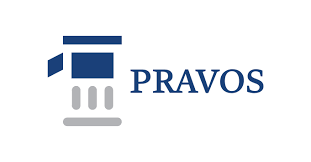Criminalistics
| GENERAL INFORMATION ABOUT THE COURSE | |
|---|---|
| Course title | Criminalistics |
| Chair of Criminal Law Sciences | |
| Number of ECTS credits | 5 |
| Lecturer | izv.prof.dr.sc. Mirjana Kondor-Langer |
| Office Address | Radićeva 13 |
| Telephone | |
| mkondorla@pravos.hr | |
| COURSE DESCRIPTION |
|---|
| Course content |
The focus will be placed on establishing a criminalistic differential diagnosis and prognosis through the cognitive G-system, in which the fundamental tools of the criminalist are information, interrogation, and instrumentalization. Students are expected to acquire knowledge related to the process of materializing investigative situations, understood as a sui generis procedure in which, based on the analysis, synthesis, and evaluation of the investigative situation, specific procedural and investigative solutions regarding criminal offenses and offenders are applied and implemented. Particular attention will be devoted to the process of trace evidence investigation, which involves the preliminary examination and study of physical findings, comparison, and the description and evaluation of the data obtained. Special emphasis will be placed on the methodological tasks of procedural and criminalistic procedures, which essentially consist of defining the problem, formulating preliminary and auxiliary versions (ad hoc hypotheses) as cognitive assumptions, considering and shaping them, and verifying them through interrogation and experiment. This is followed by drawing conclusions from the versions and practically applying the proposed solutions. Based on the acquired knowledge, students should be able to integrate that knowledge and manage the complexity of formulated judgments, particularly in cases involving incomplete or limited information, all through the prism of ethical and social responsibility linked to the application of their expertise and assessments. Additionally, the acquired knowledge should develop students' ability to solve problems in new and unfamiliar situations within a broader context connected to their field of study. Ultimately, students should learn to present their knowledge, conclusions, and supporting arguments clearly and unambiguously, both to professional and general audiences. This is especially important given the aim of enabling students to apply specific technologies in researching the processes involved in various categories of criminal offenses. Accordingly, students will be introduced to workflows of specialized investigative application programs, focusing on the morphological characteristics of criminal offenses, including the mechanism and content of the act, external chronological sequence of events, identification of antecedents and consequents, and the analysis of causal relationships. The operationalization of these processes will focus on the analysis of causal links and the investigation of the forms of culpability, encompassing elements of the crime situation such as situational traces, the nature of the conduct, and specific circumstances involving other participants. It will also include the characteristics of the offender, such as personality traits and recidivism, the circumstances influencing their actions—including pathological conditions, the influence of alcohol or drugs, physiological states, and other factors—and the determination of the form of culpability with which the offense was committed. These workflows represent specialized models for the detection and evidentiary substantiation of criminal offenses and serve to prepare students for further legal education in the field of criminal law sciences. |
| Course learning outcomes |
To recognize the possibilities of applying contemporary criminalistic methods, To identify areas of criminalistics that should be applied to specific forms of crime, To select the most tactically appropriate approach to the criminal investigation of complex criminal offenses, To independently apply specific criminalistic actions, To analyze the results of conducted criminalistic actions, To evaluate the criminalistic aspects of the collected facts, To independently make decisions in conducting a criminal investigation, |
| TEACHING METHODS | |
|---|---|
| ☑ Lectures ☐ Seminars and workshops ☐ Exercises ☐ Independent tasks ☐ Multimedia and internet | ☐ Distance education ☐ Office hours ☐ Laboratory ☐ Field work ☐ Mentoring work ☐ Knowledge test |
| EXAMINATION PROCEDURE | |
| ☐ Oral exam ☑ Written exam ☐ Colloquium |
Other: |
| ADDITIONAL FACTS |
|---|
| LIST OF LITERATURE FOR STUDIES AND EXAMS |
|---|
| Required reading |
| Pavišić, Berislav i dr.. Kriminalistika 1. 2016. Golden Marketing |
| Karas, Željko. Uvod u kriminalistiku. 2012. MUP Zagreb |
| Pavliček, Josip. Kriminalistički intervju. 2016. Međunarodno kriminalističko udruženje |
| Optional reading |
| Pavišić, B. i Modly, D.. Kriminalistika. 1999. Pravni fakultet Rijeka |
| Modly, D.. Organi unutarnjih poslova i primjena člana 154 ZKP-a (kriminalistički i krivičnoprocesni aspekti). 1990. MUP RH |
| Modly, D.. Objašnjenje trileme: ubojstvo, samoubojstvo, nesretni slučaj. 1994. MUP RH |
| Modly, D.. Metodika istraživanja silovanja. 1996. MUP RH |
| Modly, D.. Kriminalistička taktika I, Krim-arak. 2002. MUP RH |
| Pavišić, B.. Uvod u kriminalistiku. 2002. MUP RH |
| Vodinelić, V. i Aleksić, Ž.. Kriminalistika. 1990. Informator |
| Dujmović, Z.. Imovinski kriminalitet (odabrana poglavlja), Krim-arak 1. 1996. MUP RH |
| Kolar-Gregorić, T. . Kriminalistička tehnika. 1997. MUP RH |
| Kolar-Gregorić, T.. Kriminalistička identifikacija osoba. 2002. MUP RH |
| Lee, H.C. . Materijalni tragovi. 1998. MUP RH |
| Marković, T.. Kriminalistika. 1977. Informator |
| Modly, D.. Metodika uviđaja. 1988. Fakultet kriminalističkih znanosti, Sarajevo |
| Modly, D. . Metodika istraživanja razbojništva. 1999. Fakultet kriminalističkih znanosti, Sarajevo |
| Modly, D. . Osiguranje mjesta kaznenog događaja. 2001. MUP RH |
| Modly, D.. Utvrđivanje i razjašnjavanje samoubojstava pomoću indicija. 2001. MUP RH |
| Modly, D. i Korajlić, N.. Kriminalistički rječnik. 2002. Tešanj |
| Pavišić, B. (. Metodika istraživanja prometnih delikata. 1993. MUP RH |

